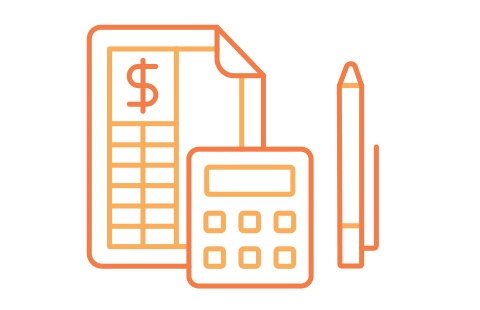The Offer in Compromise (“OIC”) program administered by the Internal Revenue Service (“IRS”) provides a mechanism for taxpayers to settle tax debts for less. However, it is only available for qualifying taxpayers. In this blog we will discuss the basics of an OIC, which includes:
- What you need to do to get into compliance;
- How to determine your eligibility, and;
- What dollar amount you should offer.
In related blogs we will discuss important timing issues you must adhere to, planning for how to pay the settlement amount, what options you have if your OIC is denied, and more. All of these topics will help you in making an informed decision as to whether an OIC is right for you. Otherwise, you may end up wasting a lot of time trying to do this yourself or a lot of money paying someone else to do this for you.
For the purposes of this blog, we will be discussing the IRS OIC program for individuals. The IRS does offer an OIC program for businesses as well, which will be discussed in a separate blog. Your state may also offer an OIC program, though some of the eligibility requirements may differ from the IRS requirements.
There are also three different types of OICs. The first is a doubt as to collectibility offer, which is what we will be discussing. The second is a doubt as to liability offer, meaning you believe an offer should be accepted based on the fact that you shouldn’t owe or do not owe the tax debt. The third is an effective tax administration offer, which deals with extenuating or special circumstances.
Getting Into Compliance
Before submitting your OIC and offer amount, you must be tax compliant. If you are not in compliance by the time the OIC is submitted, the IRS will return it. The returning of an OIC does not mean it has been denied. It simply means there are certain things that need to be done before the IRS will review the OIC. 
To be in compliance you must have filed all required tax returns (the IRS looks at the past ten years but, it is advisable to file all tax returns even past the ten year look-back period) and be current on all estimated tax payments if required to make them (for the current tax year). In cases where you have not filed tax returns for several years, the IRS may have already filed substitute returns for you, which act as filed returns. As for estimated tax payments, this would be for those who are self-employed, receive alimony, or are not having enough in taxes withheld from their income.
Example:
A taxpayer, who is self-employed, has a tax debt of $60,000 for years 2014-2017. The current year is 2018 and they have not made any estimated tax payments for the year, meaning they will most likely owe when they file their 2018 tax return. Before submitting their OIC they would need to pay all estimated tax payments so the OIC is not returned.
The reason the IRS looks for this compliance is because the OIC program is designed as a fresh start initiative. If a taxpayer is not keeping up on their current year’s taxes, there is a good chance they will owe again, which would default an accepted OIC.
Other reasons for an OIC to be returned are:
- Taxpayer is currently going through bankruptcy
- Necessary information was not included with the submission of the OIC
- The application fee or nonrefundable payment was not submitted with the OIC
Are You Eligible?
There are four main factors that the IRS will look at to determine whether or not you are eligible for your OIC to be accepted.
- Your ability to pay back the tax debt
- The value of your household’s assets
- Your household monthly income
- Your household monthly expenses
Before submitting an OIC to the IRS, it’s important to take a look at each of these because each affect whether your OIC will be accepted and how much you should be offering as a settlement.
First, let’s define what your household consists of as this is important to understand. Your household will be you, your spouse, and your dependents.

Note: Taking into consideration the assets, income, and expenses of your spouse or someone you live with does not necessarily mean the IRS will be able to collect your tax debt from this person.
Your ability to repay the tax debt is fairly straight forward and really ties into the other three requirements. If the IRS is able to determine that it is reasonable for you to be able to repay the tax debt within the collection statute of limitations (typically ten years), your OIC will most likely be rejected. But, how does the IRS know if you’re able to repay the tax debt?
The Value Of Your Assets
Though there are several assets that could be listed here that the IRS may consider, for the sake of this blog the most common assets will be discussed.
The most common asset the IRS will look at is the home and any real properties that the taxpayer has. If the amount of equity that exists in these properties is larger than the tax debt, your OIC will most likely be rejected.
The second most common asset is the equity in a person’s vehicles. A single individual with one vehicle or a married couple with two vehicles generally would not have to worry about their vehicles being considered assets that could be sold to pay the tax debt, unless the vehicles are considered “lavish” or a considerable down payment was made on the vehicle creating significant equity. Also, any additional vehicles with equity that the taxpayer (and spouse) may have will also be considered assets that could be used to repay the tax debt.
Recreational vehicles, such as RVs, motorcycles, boats, etc., are almost always considered assets that could be sold to pay the tax debt. The only time a vehicle, whether recreational or not, would potentially not be considered is if the vehicle is an income producing asset that brings in necessary income for you to live. For instance, someone whose sole source of income relies on their fishing boat will be able to argue that selling their fishing boat would cause a financial hardship.

Another asset the IRS will look at is life insurance policies that have cash value. Typically these are whole life, universal life, and variable life insurance. If the cash value of a policy is larger than your tax debt, the rejection of your OIC is likely.
Retirement accounts are also a big part of the assets the IRS will be considering. A 401k, 403b, or IRA are all fair game in determining whether to accept or reject an OIC. As it is with the other assets listed, if there is a large amount of money in your retirement account, the IRS will point to this as a way for you to repay the tax debt. The same goes for any stocks, bonds, mutual funds, or large amounts of money sitting in a savings or checking account you may have.
Next we will look at what income sources the IRS will be taking a look at.
Your Household Monthly Income
Your household income is the total amount of income you, your spouse, and any dependents have that are living in the household. In certain cases, you will need to look at more than just the income you receive from your employer or from your business.
Income to consider for each member of your household:
- Hourly wages, salaries, overtime, and bonuses

- Self-employment income (adjusted gross income)
- K-1 distributions from an S-Corp
- Distributions from a C-Corp
- Rental Income
- Income from the sale of stocks or bonds
- Social Security
- Disability
- Pensions
- Alimony and Child support
Once you have rounded up all of your household’s income sources, you will want to break them down into monthly amounts. This will then be compared to what your monthly household expenses are to determine how much disposable income is left at the end of each month.
Your Household Monthly Expenses
The monthly expenses of a household are especially important when determining whether you are eligible for an OIC. Monthly expenses can be broken down into two categories, actual expenses and allowable expenses. The actual expenses are exactly what they sound like, your actual household monthly expenses that you physically pay each month for you to maintain your home, vehicle, health or life insurance, child care, etc. The allowable expenses (or standards) are those which the IRS will generally allow in determining your monthly disposable income. These standards were set in order to create an objective standard for reasonable living expenses. The Bankruptcy Court actually uses these same standards for many bankruptcy cases. In certain situations, this can help the taxpayer because the standard is actually more than their actual expense. In other cases, it can hurt the taxpayer because the standard amount is the limit to how much the IRS is willing to accept as an expense.
Example 1:
A single taxpayer has a monthly housing and utility expense of $2,000 and lives in San Diego County (housing and utility standards are broken down by counties and parishes). The IRS allowable housing and utility expense for a single individual living in San Diego County is $2,253.
The allowable expense will actually help because it shows that more income must be allocated to this expense, lowering the potential for disposable income.
Example 2:
A married taxpayer has a monthly housing and utilities expense of $3,000 and lives in San Diego County. The IRS allowable housing and utility expense for a household size of two (because the taxpayer is married) in San Diego County is $2,646.
This allowable expense actually restricts the taxpayer to only being able to use the allowable expense rather than their actual expense. This means that even though they are paying $354 more than the standard they will not get credit for this unless they are able to argue the additional expense is reasonable and necessary.
To see the allowable amounts the IRS has for certain expenses see: IRS Financial Standards. For San Diego County Collection Financial Standards you can see our blog San Diego Collection Financial Standards – Allowable Expenses.
Here is a list of the monthly expenses commonly looked at by the IRS:
- Mortgage payment (including insurance, taxes, etc.)
- Rent payment
- Car payments

- Gas and Auto Insurance
- Household Goods (food, clothing, housekeeping supplies, etc.)
- Life and Health Insurance Premiums
- Student Loan Payments
- Court Ordered Payments (child support, alimony, etc.)
- Child Care Expenses
- Federal and state income taxes
Unfortunately, there are expenses that the IRS will not consider when calculating your household monthly expenses, including credit card payments.
Now that you can compare your gross monthly household income to your monthly household expenses, you can determine if there is a positive amount or negative amount of money left at the end of each month. This is what the IRS will use to determine whether you can afford a monthly payment to pay back the tax debt.
Determining Your Ability To Pay
Once you’ve determined how much in equity you have in your assets and how much positive or negative disposable income you have at the end of each month, you can properly assess whether the IRS may consider accepting your OIC and your offer amount. One of the biggest things to keep in mind is that the IRS is wanting to collect the debt, they are not trying to accept the OIC unless shown proof that you are unable to pay.
For example:
A taxpayer owes $60,000 and when calculating their monthly income and expenses it shows the taxpayer has positive disposable income of $700 each month. The IRS still has 100 months to collect the balance owed. Therefore, $60,000/100 = $600 a month would payoff the debt.
In this example, the IRS will not accept an OIC from the taxpayer because it clearly shows they are able to pay the tax debt back before the collection statute of limitations expires.

However, there are scenarios where even if the taxpayer has positive disposable income, the IRS may still be willing to accept an OIC.
For example:
A taxpayer owes $200,000 and when calculating their monthly income and expenses it shows the taxpayer has positive disposable income of $1,000. The IRS has 84 month to collect the balance. Therefore $200,000/84 =$2,381. Therefore, disposable income of $1,000 would not be able to repay the entire balance.
In this example, the IRS may accept your offer due to the fact that the taxpayer cannot pay the balance in full before the collection statute of limitations expires. However, you also have to take into consideration the taxpayer’s assets but, in the above example we will just assume the taxpayer does not have any.
However, in the example there is still a positive amount of disposable income at the end of each month, which means the IRS isn’t just going to accept a settlement amount of $200. To determine an offer amount for your OIC you will have to consider the repayment terms. For repaying your offer amount in 5 months or less you will need to multiply your positive disposable income by 12 to determine your offer amount. In the example above, this means your offer amount would be $12,000 (12 x $1,000). For repaying your offer amount between 6-24 months you will need to multiply your positive disposable income by 24 months. In the example above, this means your offer amount would be $24,000 (24 x $1,000).
Determining an acceptable offer amount for your OIC also depends on the equity you have in your assets. The net equity you have must also be included in the offer amount. Also, the statute of limitations the IRS has to be able to collect the debt can effect the willingness of the IRS to accept an OIC. If the statute of limitations the IRS has left is only a few years, they may be more willing to accept an OIC rather than if they have a full ten years to collect.
Conclusion
This blog is meant to be an introduction into the doubt as to collectibility OIC but, it does not include every little detail. Consulting with a tax attorney is always advisable in these matters due to the fact that there are often many factors to consider when submitting an OIC. Deciding to submit an OIC to the IRS to resolve your tax debt is definitely something to consider and can be a great way to relieve you and your family from having to pay a debt that would otherwise drive you into a financial hardship. But, before submitting the OIC you need to make sure you actually qualify because submitting an OIC that you do not qualify for could end up negatively impacting you.
Related Articles
